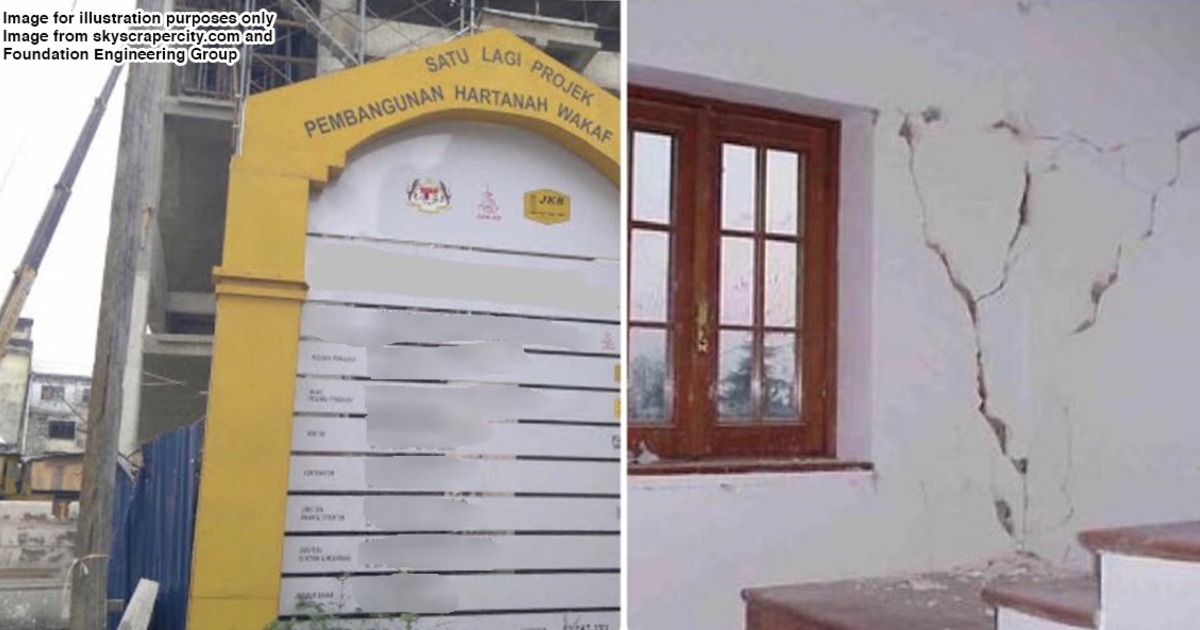

Civil,Consumer,General,Property
You now have more time to sue your developer in Msia for building defects. Here's why
over 5 years ago Christina WongMost property owners have experienced this: you happily move into your new house/office but after a few years, cracks begin to form on your walls. So you call up a handy worker to have a look, and he tells you that the previous contractor did a poor job. Frustrated, you start ranting/complaining/cursing as he patches up the crack. Tough luck, if only the cracks appeared before I got the keys to the house, you think to yourself. There’s no way to sue my developer or contractor now.
Actually, there was always a law which allowed you to sue for such cracks/defects. This law gives 6 years to sue your developer starting from the time the defect first formed. Note that the “6 years” mentioned is the age of the defect, NOT the age of your property.
A newly implemented law has improved on this time limit by giving property owners an extra 3 years to sue if the original 6 years is ending. So if you find a 6-year-old defect here, you’d still have 3 years to sue. And it covers all types of properties, so this law has got you covered whether you own an apartment, a house, an office or any building for that matter.
Sometimes you only discover the damage when it’s too late

Previously, property owners could not sue if the defects were more than 6 years old, even if they only saw it for the first time. Section 6 of the Limitation Act 1953 says:
The 6-year period had certain issues because some defects (especially cracks) start internally and cannot be seen in the initial years. By the time it surfaces on the wall, the 6 years might have expired.
To address this, Malaysia introduced Section 6A into the Limitation Act through the Limitation (Amendment) Act 2018. So if your home has a crack that is 6 years old today in 2019, then you would have until 2022 to sue (2019 + 3 years). But, just as how you would need specific ingredients to bake a cake, you’ll need to satisfy certain requirements before you can start suing.
You need to see more than the cracks on the wall

Before being able to sue for defects, you must first have two ingredients. Under Section 6A(4)(a) of the Limitation Act, it says:
So the key elements are knowledge required and a right to bring such action.
(i) you see it – This is when you see a crack, a plumbing problem, low water pressure etc; and
(ii) you know who built/certified your property – This generally means the developer or contractor who built your place, or certified that it’s safe. If you bought the property from someone else, then you’ll have to find out who was in charge.
But knowledge doesn’t just mean seeing the defect in your own house because Section 6A(4) of the Limitation Act goes on to say:
(A) from facts observable or ascertainable by him; or
(B) ...with the help of appropriate expert advice which is reasonable for him to seek...”
So apart from seeing the defects, the law demands you to hire an expert to check your property if you suspect that there could be such defects. This means that if all of your neighbours are having plumbing problems, you are expected to get an expert to check the plumbing system in your house. If you don’t, the improved law will not give you an extra 3 years.
The right to bring action simply means the right to sue. Since it’s a property defect, only the property owner can sue, which means that anyone who has his/her name in the land title. If you’re a tenant, inform your landlord about the defect so that s/he can take action.
Does everyone get 3 years to sue?

The answer is: like your relationship, it’s complicated. If you want to avoid the explanation, just skip right to the table below. Do note that the table just gives an estimation because calculating the exact amount of time is more tedious as it includes counting the months and days as well.
If the defect is 3 years or below, it will follow the old law’s 6-year period. This means that you have a minimum of 3 years and up to a maximum of 6 years to sue, depending on the precise age of the defect. The reason that the old law still applies here is because you have more time to sue under the old law compared to the new law.
The new law kicks in when the defect is 4-12 years old. You’ll have 3 years to sue if the defect is in this range. But the time you have left to sue decreases when the age of defect is more than 12 years. This is because Section 6A(3) of the Limitation Act says:
Basically, any defect which is 15 years old or older will not be entertained.
| Age of defect by year(s) | How many years do you have to sue? |
| <1 | 6 |
| 1 | 5 |
| 2 | 4 |
| 3 | 3 |
| 4-12 | 3 |
| 13 | 2 |
| 14 | 1 |
| 15 | TOO LATE |
If you’re conned, you get more than 15 years

Despite the 15-year limit, there are two exceptions. If the defects were hidden from you by fraud, or by mistake, you can sue even if you found it after 15 years. Section 29(2) of the Limitation Act provides that:
What is fraud? Fraud is when an expert found a defect in your house but hides it from you, and certified that everything is “good”. Because of this, you did not know about the defect at all.
And what is a mistake? A mistake is when an expert checks your and your neighbour’s houses, then mistakenly gives you the report of your neighbour’s house instead of yours, which states that everything is fine when it is not.
So in these two circumstances, even if you discovered the defect 30 years later, you are given 6 years to sue, starting from the time you find out about the fraud or mistake.
So even if we have more time to sue, that doesn’t mean that we should take our time to do so. Consult a lawyer and let him/her walk you through the process.
The red-headed intern juggling between this internship and CLP.